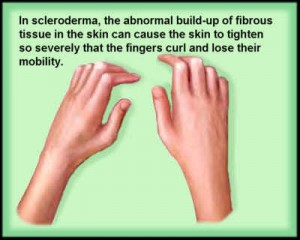 A drug used to treat cancer may also be effective in diseases that cause scarring of the internal organs or skin, such as pulmonary fibrosis or scleroderma.
A drug used to treat cancer may also be effective in diseases that cause scarring of the internal organs or skin, such as pulmonary fibrosis or scleroderma.
The drug, with the generic name bortezomib, stopped the production of fibrotic proteins in human cells and the development of fibrous scarring in a mouse model of fibrotic disease, according to a new Northwestern Medicine study published in the journal Thorax. Studies have not yet been done in humans.
“This drug appears to put the brakes on abnormal development of scar tissue in the lungs and skin and may also work in other organs,” said lead author Manu Jain, M.D., associate professor of medicine and of pediatrics at Northwestern University Feinberg School of Medicine. “These diseases have a high fatality rate, and there is no truly effective treatment for them right now.”
Scleroderma is an autoimmune disease that causes progressive thickening and tightening of the skin and can lead to serious internal organ damage and, in some cases, death. Scleroderma affects an estimated 300,000 people in the United States, most frequently young to middle-aged women.
Idiopathic pulmonary fibrosis is a scarring or thickening of the lungs without any known cause that makes it increasingly difficult to breathe. It may affect up to 200,000 people in the U.S. between 50 and 70 years old.
Jain said the drug appears to inhibit a protein called transforming growth factor beta, which is essential for the growth of the scar tissue. Patients with fibrosis have increased levels and activity of the growth factor. Bortezomib is currently used to treat multiple myeloma and lymphoma.
In the study, when researchers gave bortezomib to mice, it prevented the development of a fibrotic-like disease. “The mice that normally get this disease didn’t get it,” Jain said.
Researchers also took fibroblast cells from scleroderma and pulmonary fibrosis patients and incubated those cells with the drug. Fibroblast cells are believed to be important in the development of scarring in humans. The drug prevented the expression of proteins that are necessary for scarring.
Source: Northwestern Newcenter

Comments